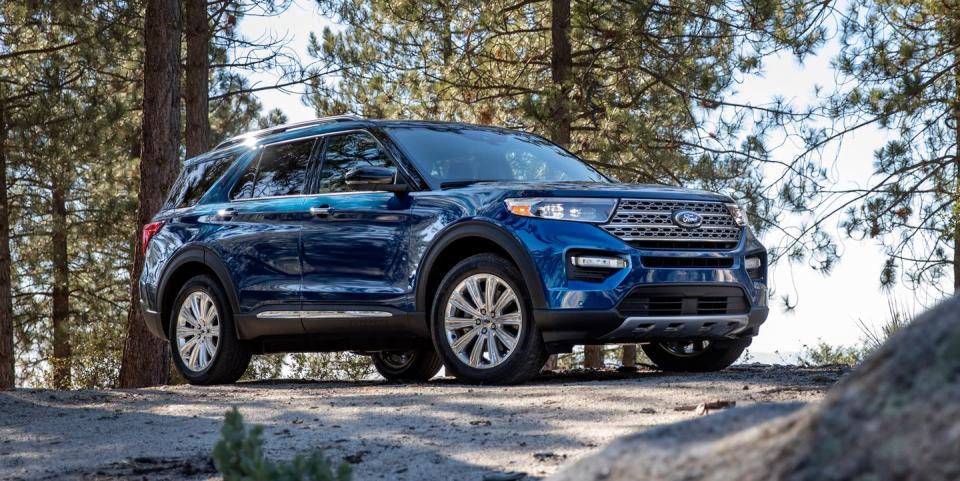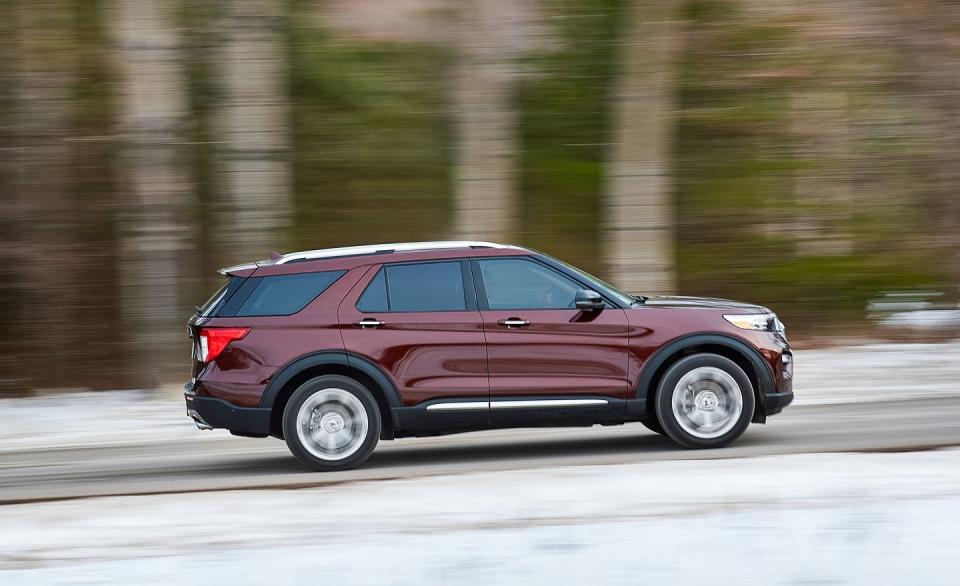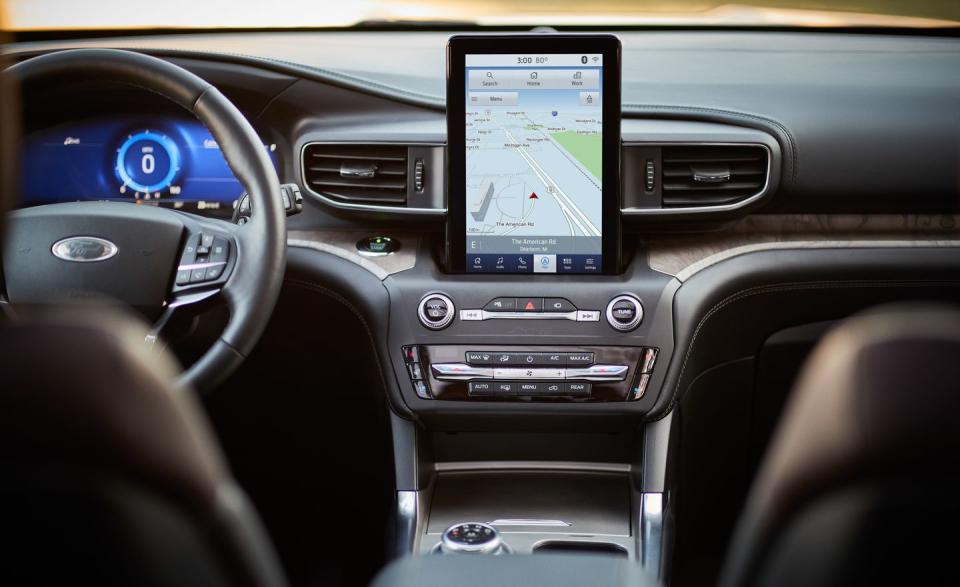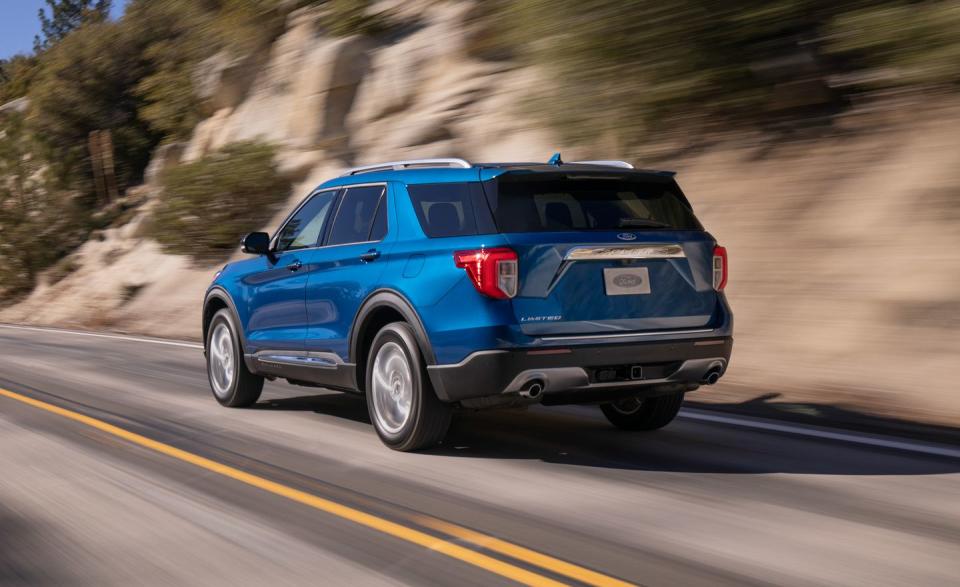The 2020 Ford Explorer Undergoes Its Biggest Changes in a Decade

UPDATE 1/14/19: Ford has announced more information about the Explorer hybrid and we have updated our story accordingly.
The Ford Explorer all but established the four-door mid-size-SUV segment when it replaced the Bronco II at the dawn of the 1990s. Derived from the Ranger pickup, the Explorer used rear-wheel-drive architecture-although most, of course, were equipped with four-wheel drive-through its first two generations. When the market eventually moved to embrace more carlike architecture, with unit-body construction and transverse-engine, front-drive-based powertrains, the Explorer followed suit with the third-generation model that arrived for 2011. Although that remains the layout for the overwhelming majority of entries in this class, the redesigned 2020 Explorer switches back to a longitudinal-engine, rear-drive-based configuration.
The new architecture is shared with the new Lincoln Aviator-and possibly other new models down the road. Although only fractionally longer overall, the wheelbase grows by six inches, and Ford claims the new Explorer has more passenger space in each of its standard three rows. The company also boasts that, with all seats folded, the Explorer with the available second-row bench can fit four-foot-wide building materials flat on the floor for the first time ever. (Second-row captain's chairs also are offered.) The reversible load-floor surface has carpet on one side, vinyl on the other, while a power liftgate and power-folding third-row seats again are available.

The turbocharged 2.3-liter EcoBoost inline-four returns as the base engine, but output increases from today's 280 horsepower to 300, with torque remaining at 310 lb-ft. It mates to a new 10-speed automatic transmission and either rear- or all-wheel drive. Its max tow rating increases to 5300 pounds, up from 3000 for the outgoing four-cylinder Explorer.
A turbocharged 3.0-liter EcoBoost V-6 comes on the Platinum trim and replaces the previous 3.5-liter unit. It makes the same 365 horses along with 380 lb-ft of torque, versus 350 for the previous turbo V-6. It, too, mates with a 10-speed automatic and sees an increase in towing capacity, to 5600 pounds, versus today's max of 5000 pounds. A new ST model will offer even more power from the 3.0-liter V-6-400 hp and 415 lb-ft, to be specific.
As in the Aviator, there's a hybrid powertrain on tap as well, although the Explorer's gas-electric drivetrain is more about fuel economy than performance. It has just a bit more power than the base turbo-four, at 318 horsepower combined, from a naturally aspirated 3.3-liter V-6 engine and some sort of electric motor (Ford is not sharing any other information about the electrified part of the powertrain other than the fact that it uses a lithium-ion battery pack mounted under second-row seats). The hybrid has a 10-speed automatic, is available with either rear- or all-wheel drive, and presumably will get around the same 24 mpg combined as the Police Interceptor hybrid.

The 2020 Explorer will come in five trim levels: base, XLT, Limited, ST, and Platinum. The starting price for the base model rises by $400, to $33,860 (prices for other trim levels have yet to be released). Standard kit includes pre-collision warning, automated emergency braking with pedestrian detection, blind-spot warning, rear cross-traffic alert, lane-departure warning, and automatic headlamps, along with 4G LTE Wi-Fi with connections for up to 10 devices. The FordPass Connect app allows the driver to lock, unlock, and start the car using a smartphone.
Other available tech features include a 12.3-inch digital instrument cluster, a 10.1-inch portrait-oriented touchscreen infotainment system that supports Apple CarPlay and Android Auto, and wireless device charging. The Explorer boasts as many as four USB ports (including type-C), a trio of 12-volt outlets, and a 110-volt outlet.
Moving the Explorer to rear-drive architecture is not without risk for Ford, given that the Explorer is the top-selling model in its segment. But it allows for better design proportions, and it makes the Explorer a more credible donor platform for its new Lincoln stablemate.

('You Might Also Like',)

 Yahoo Autos
Yahoo Autos 